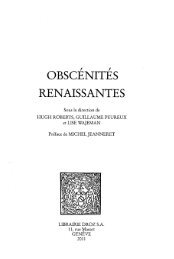Download (3398Kb) - ePrints Soton - University of Southampton
Download (3398Kb) - ePrints Soton - University of Southampton
Download (3398Kb) - ePrints Soton - University of Southampton
You also want an ePaper? Increase the reach of your titles
YUMPU automatically turns print PDFs into web optimized ePapers that Google loves.
whether juveniles derived from larval cloning will develop until they reach sexual<br />
maturity, or if larval cloning has only fitness consequences for either the primary or<br />
cloned larvae (Knott et al., 2003). Balser (2004) stated that cloned larvae also<br />
reproduce asexually creating a potential perpetual cycle <strong>of</strong> cloning, this author<br />
suggests that the ecological and evolutionary connotations <strong>of</strong> this incident is to<br />
increase the number <strong>of</strong> original <strong>of</strong>fspring produced and in consequence to enhance the<br />
potential advection <strong>of</strong> larvae spawned in a single event.<br />
Larval cloning signifies an interesting new element for the life histories <strong>of</strong><br />
invertebrates. This process presents three potential ecological advantages for the<br />
cloning species: 1) an increased fecundity when the conditions are appropriate for<br />
optimal growth, 2) an increased probability <strong>of</strong> settlement after a prolonged larval life,<br />
and 3) recycling <strong>of</strong> otherwise unused or reabsorbed larval tissue (Eaves & Palmer,<br />
2003).<br />
44
















